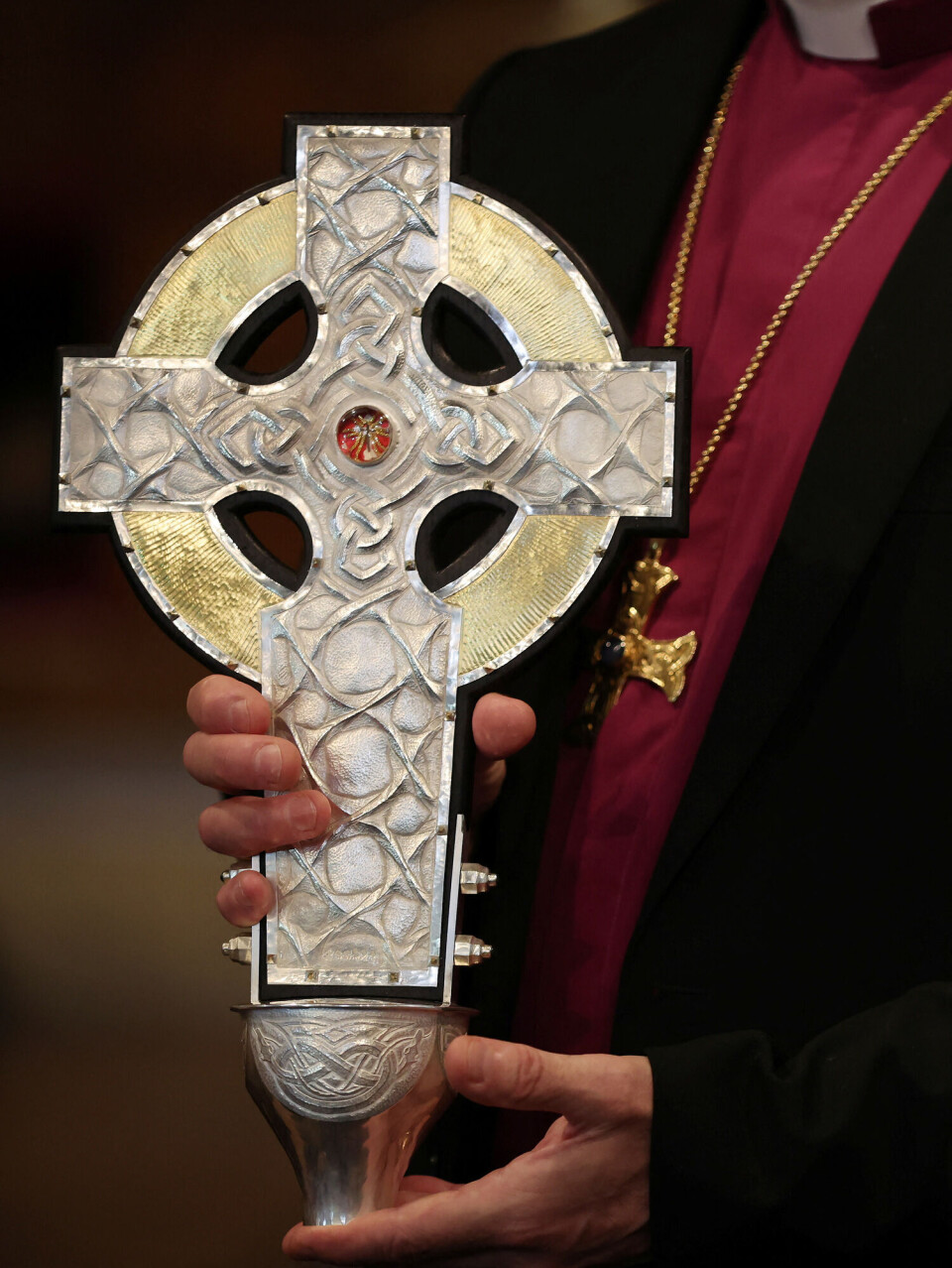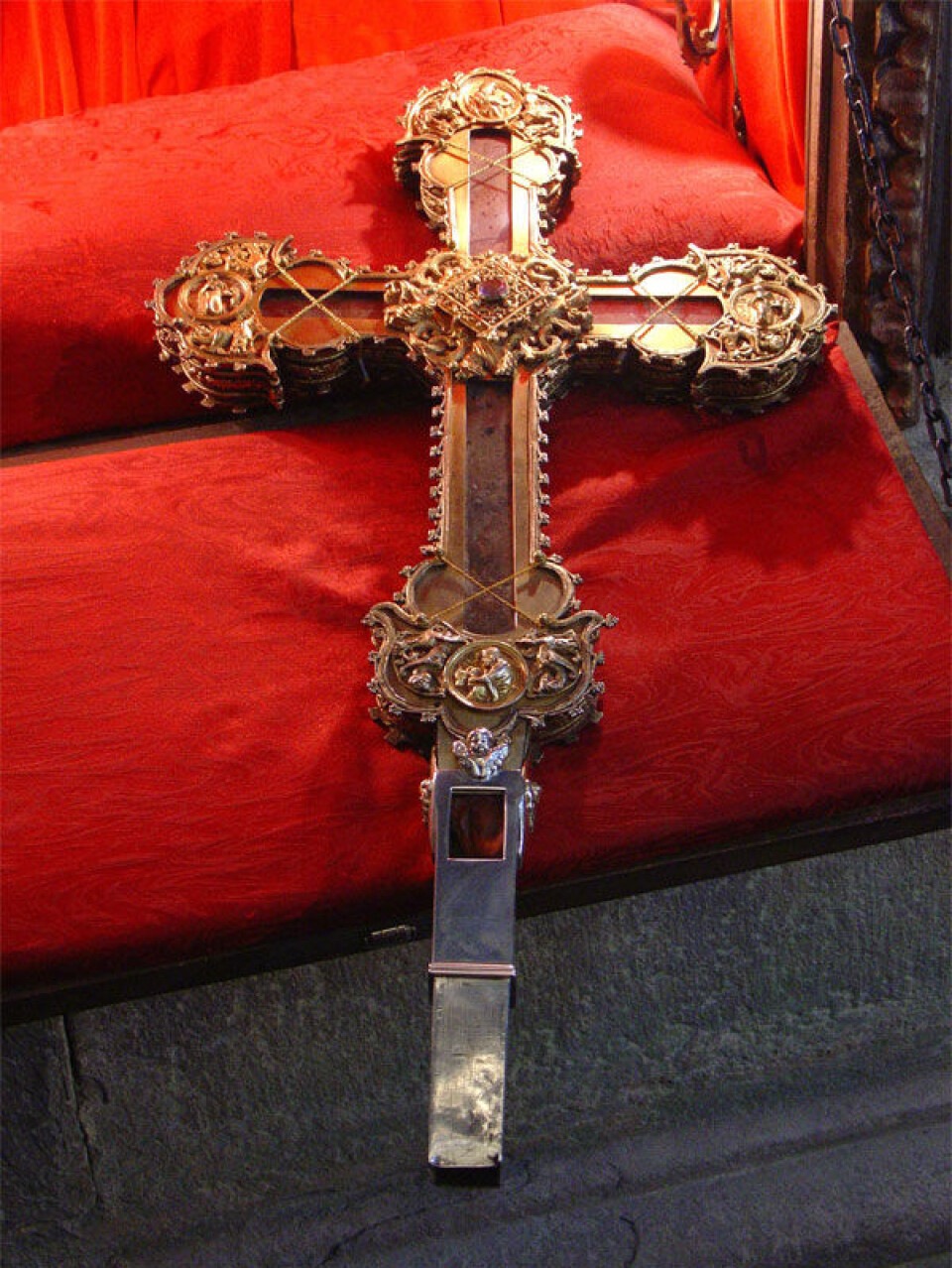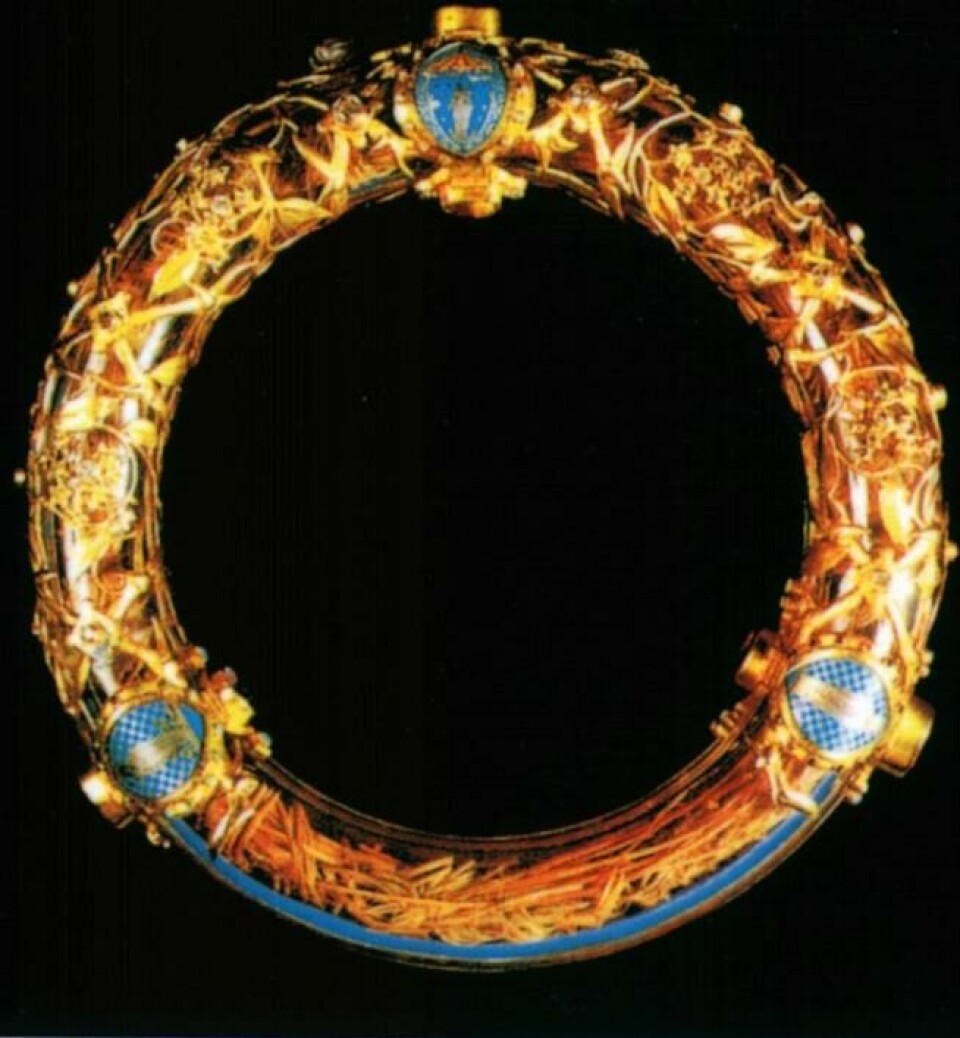
King Charles will be protected by two small wood shards from the cross of Jesus on coronation day
We cannot know that they are real, but that’s not the most important thing, says one historian. Here is the story behind the True Cross.
Britain's new king, Charles III, will be crowned on Saturday 6 May.
During a procession through London's streets, he will be protected by a cross given as a gift from the Pope, the Catholic Church has written on its website.

“These are two tiny splinters, framed in metal, which are to be carried next to or behind the king when he is crowned,” historian Kristin B. Aavitsland said to sciencenorway.no.
Aavitsland is head of department at the Norwegian Institute in Rome at the University of Oslo.
One splinter is one millimetre long, and the other is five millimetres long.
There is strong symbolism in King Charles receiving a piece of the True Cross on the occasion of his coronation.
Different and pre-modern
“When this is used in a coronation ceremony, the idea is that royal power is legitimized by God,” Aavitsland said.
It says that the king abides by what is written in the Gospels, she says, and that Jesus's disciples must take up their cross and follow him.

“The idea that royal power is legitimized by God is a different and pre-modern thought,” Aavitsland said.
At the same time, the British royal house is known for keeping many old traditions alive. For example, members of the royal house are baptized in water from the same river that Jesus was baptized in, namely the Jordan, Aavitsland said.
Objects with God's power
The True Cross has been broken into wooden shards and essentially destroyed. But it’s not that big a problem, Aavitsland said.
“The important thing is to understand the point of relics in Christianity,” she said.
First, we have to understand why physical objects, such as wood splinters, can be sacred.
In Christianity, people think that God is a pure spirit without a body. Nevertheless, Christians believe that certain things can embody holiness, that is, have some of God's power in them, Aavitsland said.
“This is because, as Christians understand it, God actually became a human being. He inhabited a body, which thus becomes a kind of justification for objects being holy,” she said.
Christianity is the only religion that believes in the idea that God has been incarnated as a human, meaning that he can appear on Earth as a man.
Intensely sacred
And then there’s the matter of the cross.
“The cross is an intensely holy thing because it has been in direct contact with God incarnate,” she said.
The point of God taking the form of a human was that God would sacrifice himself for the sake of humankind.
“The cross becomes a kind of concentrated holy point in the world,” she said. “The stories about Jesus are concrete and real, and these objects take on the same aura.”

The cross is the closest we get to Jesus
Relics can take the form of hair, bone remains, or other remains from a holy person's body.
“When it comes to Jesus, we have something called touch relics,” Aavitsland said.
“We don’t have any relics or physical substance from Jesus's body because, according to Christian teaching, he ascended to heaven, as stated in the creed,” she said.
As is true with other saints, relics can be things that have been in physical contact with the holy person, such as St. Olav's robe in Norway.
Empress Mother found the cross
The history of the True Cross stretches all the way back to the fourth century.
“Tradition says that Empress Helena went to Jerusalem to find a holy cross,” Aavitsland said.
Empress Helena was the mother of Emperor Constantine the Great, the first Christian emperor.
She is said to have found the cross in the early 300s.
“By then Jerusalem was gone— destroyed by another Roman emperor in the year 70,” Aavitsland explains. “Only a generation after Jesus had died, Jerusalem was simply looted and destroyed by the Romans. The city lost its name and was then called Aelia Capitolina. Many of the Jews were expelled.”
According to tradition, Helena returned to Aelia Capitolina, looked for the cross and found it.
The place where she found the cross is where Emperor Constantine built the Church of the Holy Sepulchre, which still stands today, despite many alterations.

The division begins
Helena took the relic of the cross with her. By then the cross had been chopped up.
She left one piece in Jerusalem, where it belonged. She took one piece with her to Rome, which was still the capital of the Empire and the Church. The third piece ended up in Constantinople, which is today's Istanbul.
“In medieval Christian culture, there is a powerful story about Helena finding the cross, and May 3 is the day that Christians celebrate the rediscovery of the cross.
But what’s the likelihood that Helena found the very cross upon which Jesus had been crucified? And what is the probability that these splinters originate from the actual cross after 1,700 years?
What is really original?
“We can’t know the answer to those questions, of course,” Aavitsland said.
Science cannot determine whether the relics are real.
“It’s easy to ridicule this idea, but then you shut down your ability to understand what it is all about,” the historian said.
“It is intellectually quite lazy to simply dismiss this as nonsense, because it was not nonsense to the people of the past. Historical sources show that the cross relic has triggered wars, and we have to try to understand how it happened,” she said.
Our understanding of authenticity depends on our entire way of thinking, Aavitsland said.
An authentic icon under Eastern Christianity is a copy of an older original. If something is depicted again and again, it is as if the sanctity is continued in the image itself, she explains.
“In modern times, on the other hand, it has been thought that copying an image is forgery. This is the view that was influenced by the Reformation in 1537,” she said.
The Reformation
Aavitsland believes that secular people in the West are more influenced by 500 years of Protestantism than we realize.
“The sacred is something a little abstract that you cannot touch and feel. We don’t think that it is something physical,” she said.
Nevertheless, relics are important to non-Protestant Christians.
The Church of England is, as in Norway, Protestant. But taking care of traditions that are older than Protestantism is probably an important reason why Charles will still be protected by splinters from the True Cross on May 6.

Lost wood fragment
The Reformation made Norwegian relics essentially insignificant. Now many of our relics have simply been lost.
A lot happened from the 4th century, when Helena found the cross, to the 12th century, when Sigurd Jorsalfare fought in the Christian crusaders' war in the Middle East.
During that time, Jerusalem had become Muslim. As a thank you, Sigurd Jorsalfare received a piece of the True Cross as a gift from the king.
“We do not know where this fragment is now,” Aavitsland says.
While King Baldwin of Jerusalem wanted Sigurd Jorsalfare to take the relic from the cross with him to Nidaros (the medieval name for Trondheim) and St Olav's grave, Jorsalfare did not. Rather, he kept it in Konghelle in present-day Sweden. It made it to Nidaros eventually, but today it has been lost.
The crosses, with their power, were often carried in war. Thus they were also quickly lost.
The same was true of the thorns from Jesus's crown of thorns that Norwegian kings brought home from the French king. They are gone. The Crown of Thorns is still found in Paris.
Translation by Nancy Bazilchuk
———
Read the Norwegian version of this article at forskning.no



































